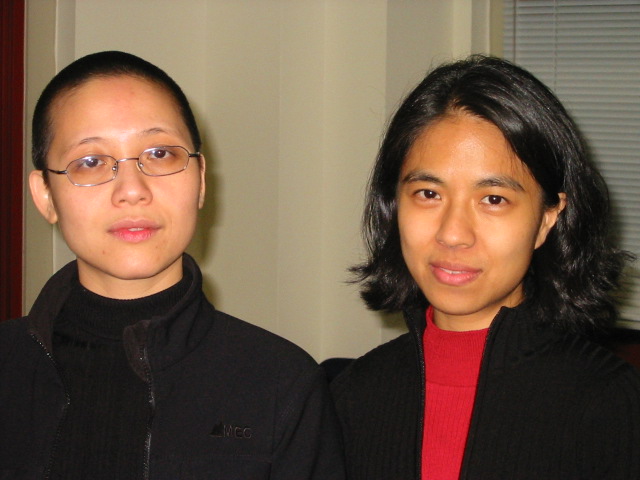
We’d like to begin with a quote from Siegried Kracauer’s 1927 essay on photography: “memory-images appear to be fragments but only because photography does not encompass the meaning to which they refer and in relation to which they cease to be fragments. Similarly, from the perspective of memory, photography appears as a jumble that consists partly of garbage.” Our project, Unidentified VN, is a sifting through of some of that detritus leftover from the VN war. We are mining the artifacts of the SVN Embassy film collection in a process similar to archaeology. Our project hopes to illuminate the connections between history, politics, visual representation and cultures.
The propaganda films we have researched document events of the past-evidence of US involvement in SE Asia, and the complicated relations involved in US political aims that can be said to mascquerade as aid. Ngo Dinh Diem arrived as the President of South Viet Nam when the newsreels began. We see banners declaring “US/VN friendship is forever”, and “Destroying Communist forces is the responsibility of all citizens.” The films posit a demonized Other in the North Vietnamese National Liberation Front. In opposition to this, they evoke a romanticized, idyllic everyday life, and an idealized portrayal of the South Vietnamese government. They deliver an imagery of power, modernization, and military prowess.

We are interested in the relationship between the document and history-how each shapes the other. Artifacts and documents of the past have been memorialized and monumentalized as evidence. The films we have examined are artifacts. They were the rescued refuse from a nation that is no longer. They now serve as an index to a war that was never declared. A war that has been reconstituted as a conflict. History does not stop once it happened. It continues to redefine itself through the trivial, the comic, and the traumatic. It becomes oral, published, or forgotten through collective memory, or collective amnesia. From the films, we see history as at once negotiated and indecipherable. Our investigation is inclusive of the tangential as well as the institutional–histories that exist simultaneously with and without the emblazoned capital ‘h’.
There is an underlying assumption in documentary filmmaking that if one records the voice of the people, one is able to represent the people. Our process counters that assumption. It is impossible to fully represent “the people” as if they are a unified, collective identity. This is why we seek out participants in our project to collaboratively imagine how history can be interpreted through lived experience, through time, distance, and memory. Can history be interpreted through the images in this collection? We are interviewing people who are familiar with Vietnam and Vietnam/US relations from 1955-75 through personal, professional, or political experiences. Their insights, confusions, and misidentifications call attention to the discrepancy of information and our lack of access to the historical, political, and possible cultural references. Their responses unpack the image- what do these images represent today; what role did they have at that particular time? For us, the collected responses, contradictory and confirming–fragments like the photographic image itself–narrate and contextualize an isolated period of South Vietnamese history within a framework of a global present. The results are as much about the process of interpretation as the information they provide. Here is a sample of the responses we have collected so far:

From history books we learned that the US had invested millions of dollars to support the French’s hold on VN. Millions more were expended as it sent tens of thousands of “military advisers” to “train” the SVNmese army to fight the North. We are reminded of how history repeats itself in terrible ways when some of the interviewees-whether government worker, educator, or anti-Vietnam War protester-link their past to current events. Can the demonization of Ho Chi Minh during the Red Scare be compared to the demonization of Sadaam Hussein, Osama bin Laden or the Taliban in this current “War on Terrorism”? We know the liberation of the Vietnamese people was a rationale for violence in Southeast Asia. What can we say about the proposed liberation of Iraq today? “They must see Americans as strange liberators,” the Rev. Martin Luther King passionately cautions us in his 1967 speech “Beyond Vietnam.” He goes on to ask this question of the US government then that we could repeat at this present moment: “Is our nation planning to build on political myth again and then shore it up with the power of new violence?”
To return to Kracauer’s essay, he draws a correlation between photography and ghosts: “Ghosts are simultaneously comic and terrifying. . . . [Photography] represents what is utterly past, and yet this refuse was once the present. . . . Spooky apparitions occur only in places where a terrible deed has been committed.”
Copyrighted by Lana Lin & H. Lan Thao Lam, 2003

